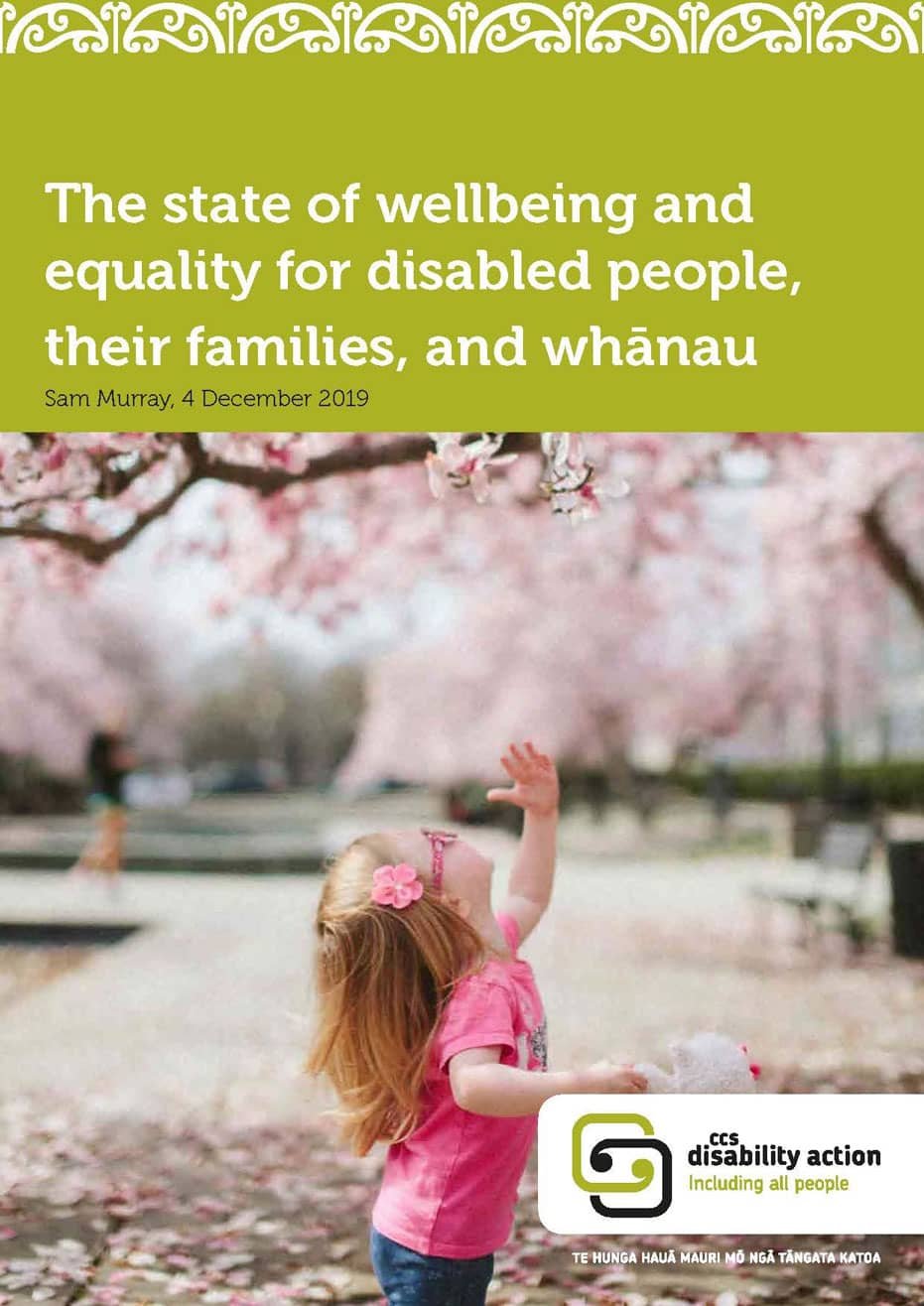Radical reform needed to save disabled children from poverty
“I think New Zealanders will be shocked to learn how bad things have become for disabled children, adults and their families. The data shows us that poverty is getting worse for disabled children and their whānau. It’s time for urgent action,” says CCS Disability Action Chief Executive David Matthews
CCS Disability Action published the State of wellbeing and equality for disabled people, their families, and whānau report at a launch event at the Sudima Hotel in Christchurch on December 4. The report uses Statistics New Zealand and Ministry of Education data, not previously released, to provide a detailed picture of the lives of disabled people and their families in New Zealand.
The report reveals a gloomy picture, showing unacceptably high levels of inequality, in virtually all key measures of wellbeing. It also uncovers evidence that this situation is worsening.
Mr Matthews also said that the data clearly shows current government policy and support is failing disabled New Zealanders and their whānau.
“Successive governments have been content to tweak disability policy and look, fruitlessly, for ways to reform that do not require substantial investment. It should be clear from this data that substantial investment is needed. The inequalities are too large to address through slow change and minor increases in spending.”
The findings: disabled children and their carers
Disabled children and their carers are significantly more likely to live in poverty in New Zealand. Households with disabled children are between 1.4 and 1.6 times more likely to be below all three poverty thresholds than households that only had non-disabled children.
Specifically, the report shows:
Households with disabled children were 1.5 times more likely to earn under $40,000 a year, compared to households that only had non-disabled children.
63% of carers of disabled children say they do not have enough money or only just enough money.
Poverty appears to be getting worse for disabled children and their families and whānau. In 2018, disabled students receiving the Ongoing Resourcing Scheme (ORS) were 1.5 times more likely to be at decile 4 and below schools, compared to all students. This is up from 1.4 in 2009.
The statistics on disabled students receiving ORS at special schools were even worse. They were 1.9 times more likely to be at decile 4 and below schools, compared to all students. This is up from 1.7 in 2009.
The findings: disabled adults under 65
Disabled adults in New Zealand face concerning levels of discrimination and material hardship, significantly effecting their reported wellbeing. Compared to non-disabled people in the same age range the report shows that disabled people under 65 are:
2.5 times more likely to experience material hardship.
1.6 times more likely to say their housing was very unaffordable.
2 times as likely to report being discriminated against.
2.2 times more likely to rate their life satisfaction as a 6 or below (on a scale where 10 is the highest).
1.9 times more likely to rate the wellbeing of their family as a 6 or below (on a scale where 10 is the highest).
Almost twice as likely to report being discriminated against.
Mr Matthews is calling for radical and urgent changes to address these entrenched issues.
“We need new ideas, big ideas, and big changes. We need a new Accessibility Law. We need a doubling or tripling of disability allowances. We need the Government to follow the recommendations of the Welfare Expert Advisory Group and get the Ministries of Health and Social Development to sit down and come up with a comprehensive system that meets people’s real disability related-costs. Let’s not forget all the people and the children who sit behind these numbers, who just want a fair go. In order to make a real difference, it’s time to stop the tinkering and create real change, says David Mathews.”
[ENDS]
Additional notes on the data:
The report uses a variety of data, most of which has not been published before. For the section on adults, data was used from the 2018 General Social Survey. This data was broken apart into disabled people under and over 65. This is not done in official government releases.
Currently, the Government only publishes all-ages disability data from the General Social Survey. This data tends to mask the inequality younger disabled people face.
The data on children was based on the 2013 Disability Survey that has not been published as well as data requested from the Ministry of Education on students receiving ORS.

